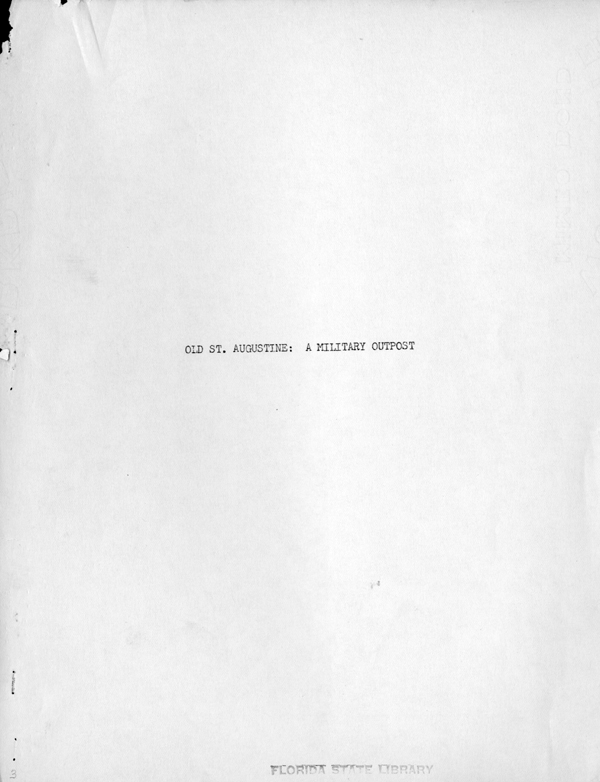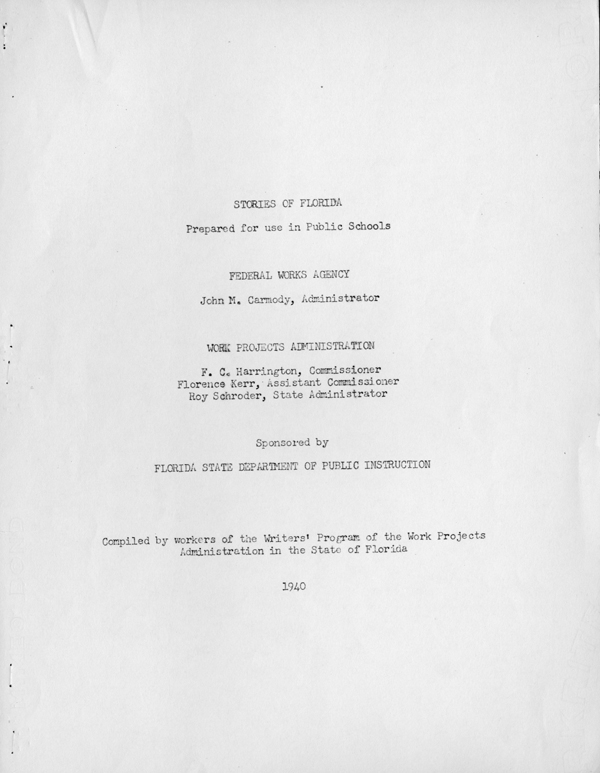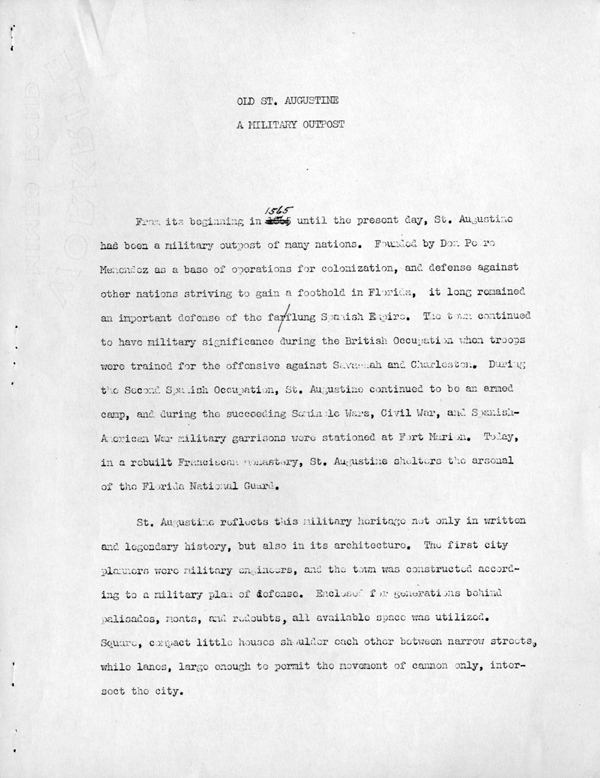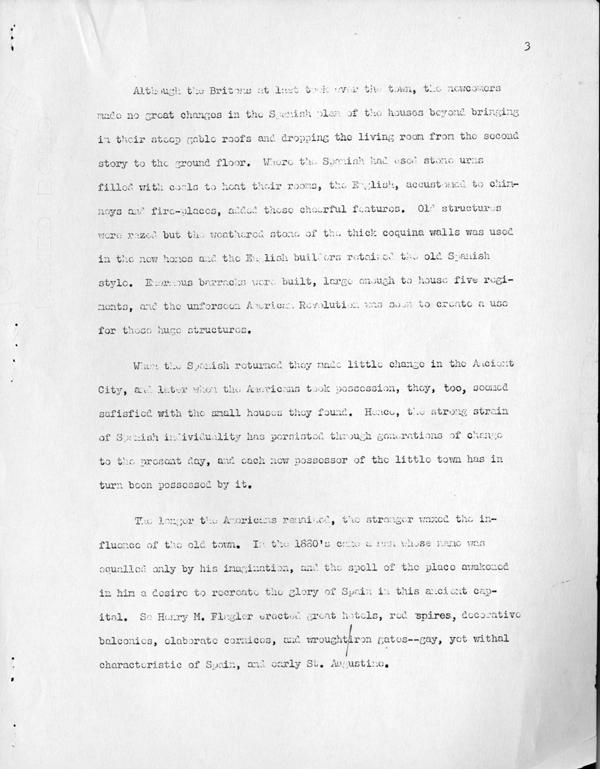Florida Memory is administered by the Florida Department of State, Division of Library and Information Services, Bureau of Archives and Records Management. The digitized records on Florida Memory come from the collections of the State Archives of Florida and the special collections of the State Library of Florida.

State Archives of Florida
- ArchivesFlorida.com
- State Archives Online Catalog
- ArchivesFlorida.com
- ArchivesFlorida.com
State Library of Florida
Related Sites
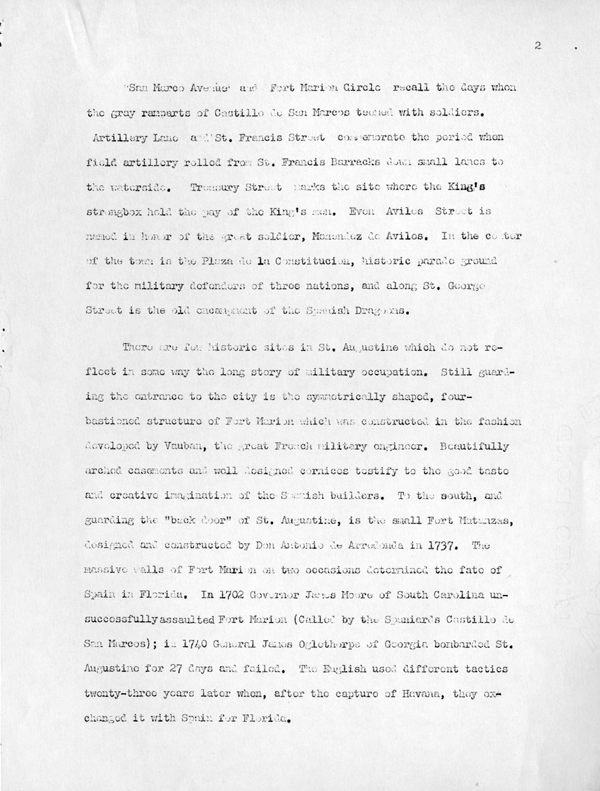
Description of previous item
Description of next item

Title
Published Date
[page 2]
San Marco Avenue and Fort Marion Circle recall the days when the gray
ramparts of Castillo de San Marcos teamed with soldiers. Artillery Lane and St.
Francis Street commemorate the period when field artillery rolled form St.
Francis Barracks down small lanes to the waterside. Treasury Street marks the
site where the King's strongbox held the pay of the King's men. Even Aviles
Street is named in honor of the great soldier, Mendez de Aviles. In the center of
the town is the Plaza de la Constitucian, historic parade ground for the military
defenders of three nations, and along St. George Street is the old encampment of
the Spanish Dragoons.
There are few historic sites in St. Augustine which do not reflect in
some way the long story of military occupation. Still guarding the entrance
to the city is the symmetrically shaped, four-bastioned structure of Fort
Marion which was constructed in the fashion developed by Vauban, the great
French military engineer. Beautifully arched casements and well designed
cornices testify to the good taste and creative imagination of the Spanish
builders. To the south, and guarding the "back door" of St. Augustine, is the
small Fort Matanzas, designed and constructed by Dan Antonio de
Arredondo in 1737. The massive walls of Fort Marion on two occasions
determined the fate of Spain in Florida. In 1702 Governor James Moore of
South Carolina unsuccessfully assaulted Fort Marion (Called by the
Spaniards Castillo de San Marcos); in 1740 General James Oglethorpe of
Georgia bombarded St. Augustine for 27 days and failed. The English used
different tactics twenty-three years later when, after the capture of Havana,
they exchanged it with Spain for Florida.
Title
Subject
Description
Source
Date
Format
Language
Type
Identifier
Published Date
Image URL
Thumbnail
Transcript Path
Image Path
Image Path - Large
Chicago Manual of Style
Old St. Augustine: A Military Outpost. 1940. State Archives of Florida, Florida Memory. <https://www.floridamemory.com/items/show/181530>, accessed 1 January 2026.
MLA
Old St. Augustine: A Military Outpost. 1940. State Archives of Florida, Florida Memory. Accessed 1 Jan. 2026.<https://www.floridamemory.com/items/show/181530>
AP Style Photo Citation

 Listen: The Assorted Selections Program
Listen: The Assorted Selections Program